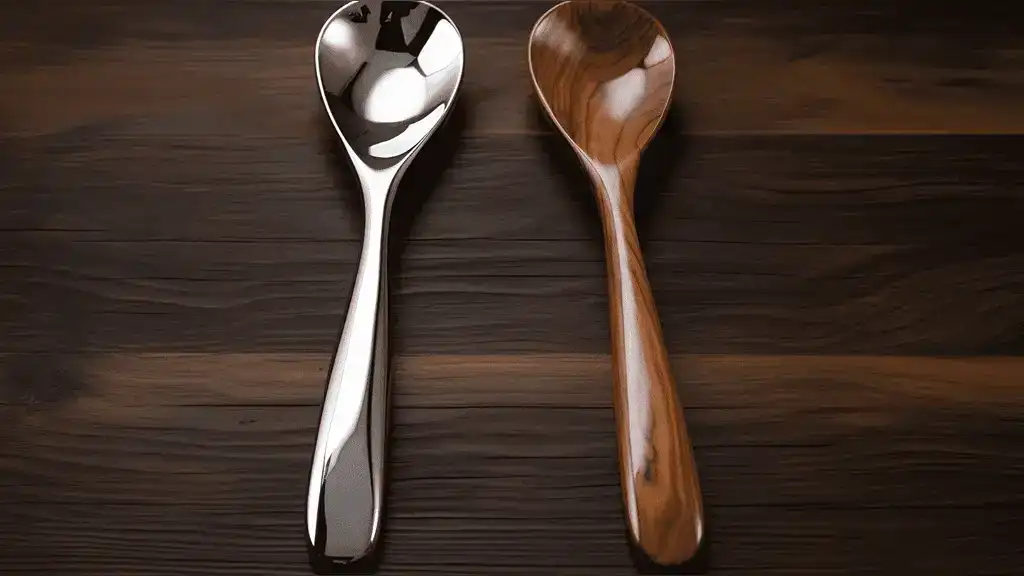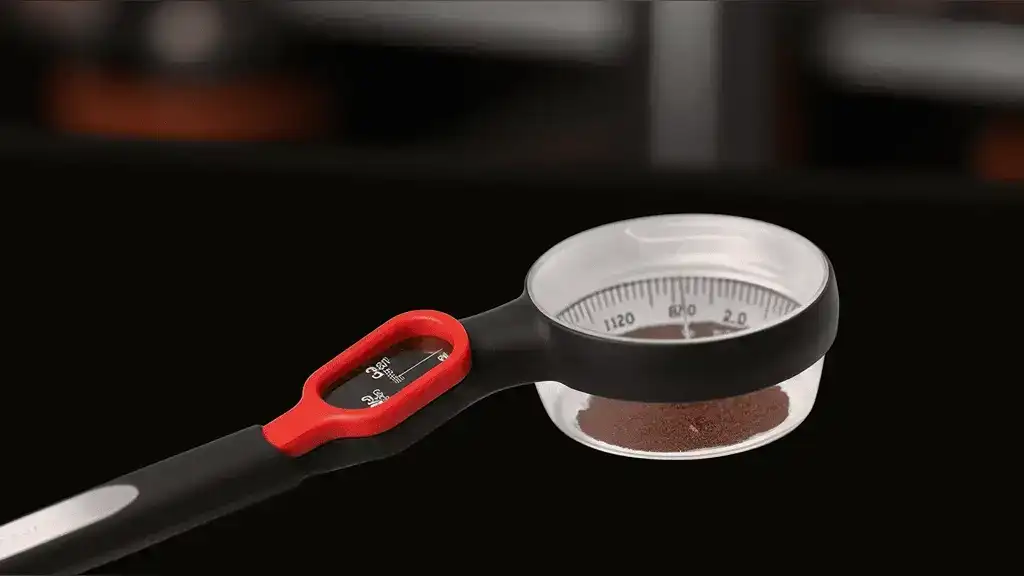Are you unsure about how much coffee to use? Don’t worry, this coffee scoop size guide has got you covered.
Understanding the basics of coffee scooping is essential for achieving the perfect brew. In this article, we’ll delve into the science behind coffee scooping and how it affects your cup of joe. We’ll also explore the different materials and designs of coffee scoops and their impact on functionality.
Get ready to learn practical tips for using coffee scoops with various brewing methods. Plus, we’ll discuss cultural variations and environmental considerations.
Let’s dive in!
Understanding the Coffee Scoop size Basics
In this section, you’ll gain a solid understanding of the basics of coffee scooping. It will provide you with the foundational knowledge needed to navigate the world of coffee scoop sizes.
Defining the Standard Coffee Scoop Size
You should check out the standard coffee scoop guide to understand the typical measurements and what’s commonly accepted as a ‘standard’ scoop.
The standard coffee scoop refers to a specific measurement that’s widely recognized and used in the coffee industry. It’s important to note that there’s no universal standard, as different countries and regions may have their own variations.
With so many options out there, how do you choose the right coffee scoop? Navigate the world of coffee scoops with ease using this guide on selecting the right coffee scoop. From size to material, this article will ensure you pick the perfect scoop for your needs.
However, the most common standard coffee scoop measures around 10 grams of coffee. This measurement is based on the general ratio of 1 scoop of coffee to 6 ounces of water, which produces a medium-strength cup of coffee.
It’s important to keep in mind that personal preferences may vary, and you can adjust the scoop size to achieve your desired strength and flavor.
Diving into Scoop Size Variations
Take a closer look at the specific uses and variations of coffee scoop sizes in our detailed guide.
When it comes to coffee scoops, there’s no one-size-fits-all approach. Different scoops serve different purposes, and understanding their variations is essential for coffee enthusiasts.
The most common coffee scoop sizes range from 1 tablespoon to 2 tablespoons, with some smaller scoops measuring around 1.5 teaspoons. The larger scoops are suitable for making a strong cup of coffee, while the smaller ones are ideal for single servings or measuring out precise amounts of coffee.
Additionally, there are specialized scoops designed for espresso, cold brew, and French press coffee. These scoops have unique shapes and sizes to ensure the perfect brew.
The Science of Coffee Scooping
In the section on ‘The Science of Coffee Scooping’, you’ll discover the fascinating relationship between scoop size and coffee strength. By altering the size of your scoop, you can influence the resulting flavor and intensity of your brew.
Additionally, we’ll explore how different coffee bean types and roasts can impact the amount of coffee you should scoop.
The Relationship Between Scoop Size and Coffee Strength
Get the most out of your brew by understanding how altering the scoop size can directly impact the strength and flavor of your coffee.
The size of the coffee scoop you use plays a crucial role in determining the strength and taste of your morning cup of joe. When you use a smaller scoop, you’re adding less coffee grounds, resulting in a weaker brew.
Conversely, using a larger scoop means you’re adding more coffee grounds, which leads to a stronger and more robust flavor.
It’s important to note that the strength of your coffee isn’t only determined by the scoop size, but also by factors like water temperature, brewing time, and grind size.
Coffee Bean Type and Its Impact on Coffee Scoop Size
When choosing your coffee bean type and roast, consider how it can impact the amount of coffee in your scoop and ultimately affect the strength and flavor of your brew. Different coffee bean types and roasts can vary in density and size, leading to differences in the amount of coffee that fits into a scoop.
For example, lighter roasted beans tend to be denser, meaning they take up less volume in a scoop compared to darker roasts. This can result in a smaller amount of coffee in your scoop, potentially leading to a weaker brew.
On the other hand, darker roasted beans are less dense and take up more space in a scoop, resulting in a larger amount of coffee and potentially a stronger brew.
It’s important to consider these factors when choosing your coffee bean type and roast, as it can directly impact the strength and flavor of your coffee.
The Science Behind Consistent Scooping
With this coffee scoop size guide, you can learn the science behind consistent scooping and ensure you’re getting a consistent amount of coffee every time.
Scooping the right amount of coffee is crucial for achieving the perfect brew. The size of your coffee scoop plays a significant role in determining the strength and flavor of your coffee.
Want to become a master in using your coffee scoop? Delve into this comprehensive guide on mastering the use of your coffee scoop. From techniques to tips, this article will elevate your coffee brewing game to the next level.
A standard coffee scoop typically holds around two tablespoons of ground coffee. However, it’s essential to note that different coffee brewing methods may require different scoop sizes.
For example, a French press may require a coarser grind and a larger scoop size, while an espresso machine may require a finer grind and a smaller scoop size.
Coffee Scoop size: Materials and Design
In this section, you’ll explore how the design and material of coffee scoops can impact their functionality. Understanding how these factors influence the scoop’s performance is crucial in determining the right scoop size for your brewing needs.
Material and Design
Have you ever wondered how the material and design of your coffee scoop affects the volume of coffee it can hold? Well, let’s break it down for you. Here are three key factors to consider:
- Scoop Size: The size of the scoop plays a significant role in determining the volume of coffee it can hold. A larger scoop will naturally have a higher capacity, allowing you to measure more coffee grounds in a single scoop.
- Scoop Shape: The shape of the scoop can also impact its volume. A scoop with a deeper and wider bowl will be able to hold more coffee compared to a scoop with a shallow and narrow bowl.
- Material Density: Lastly, the density of the material used to make the scoop can affect its volume capacity. A denser material may allow for a thinner scoop construction, resulting in a larger volume capacity.
Looking for the best coffee scoops in the market? Check out this curated list of the best coffee scoops available. Whether you’re after design, material, or functionality, this guide has got you covered.
Digital Advancements in Coffee Scooping
You can now experience the convenience and accuracy of digital measurement with modern coffee scoops, introducing a new level of precision and control to your brewing process.
These innovative scoops are equipped with built-in scales, allowing you to measure your coffee grounds with utmost accuracy. Gone are the days of eyeballing or using traditional scoops that may vary in size.
With digital scoops, you can ensure consistent and precise measurements every time, resulting in a consistently flavorful and well-balanced cup of coffee.
Here is a comparison table showcasing some popular digital coffee scoops available in the market:
| Scoop Model | Capacity (grams) | Features |
|---|---|---|
| Chneeu | 10 | LCD display, tare function |
| Penn Scale | 20 | Timer, auto-off feature |
| Rattleware | 30 | Multiple unit conversions |
These digital scoops not only provide accurate measurements, but they also offer additional features like timers and unit conversions, making your coffee brewing experience even more convenient. So why settle for guesswork when you can have precision at your fingertips with these modern coffee scoops? Upgrade your brewing process today and enjoy a perfectly measured cup of coffee every time.
Have you ever pondered the difference between using a traditional coffee scoop and a modern coffee scale? Dive deep into the comparison between coffee scoops and coffee scales to understand which tool offers more precision in your brewing process.
Coffee Scoop size: Practical Applications
In this section, you’ll find practical advice and tips on how to use coffee scoops with different brewing methods.
It offers guidance on adjusting scoop measurements for various brewing techniques, ensuring you achieve the perfect cup of coffee every time.
Feeling crafty and want to create your own coffee scoop? Discover the art of carving your own scoop with this DIY coffee scoop carving guide. Not only will you have a unique tool, but you’ll also enjoy the satisfaction of using something you made with your own hands.
Additionally, it provides insights on converting coffee scoop measurements to common kitchen tools, allowing you to make adjustments if you don’t have a coffee scoop on hand.
Scoop Measurements Across Brewing Methods
You’ll need to adjust your scoop measurements depending on the brewing method you choose. Here are three key factors to consider:
- Grind size: Different brewing methods require different grind sizes. For example, a French press requires a coarse grind, while an espresso machine needs a fine grind. Adjusting your scoop size ensures that you’re using the right amount of coffee for each method.
- Brew time: The longer the brew time, the more extraction occurs. If you’re using a method with a shorter brew time, such as a pour-over, you may need a smaller scoop size to prevent over-extraction. Conversely, a longer brew time, like with a cold brew, may require a larger scoop size to achieve the desired strength.
- Personal preference: Everyone’s taste buds are different. If you prefer a stronger cup of coffee, you may want to increase your scoop size slightly. Conversely, if you prefer a milder cup, decrease the scoop size accordingly.
Converting Coffee Scoop Measurements to Kitchen Tools
Try out different kitchen tools as alternatives to coffee scoops and easily convert their measurements using this helpful guide.
When you find yourself without a coffee scoop, don’t worry! You can use common kitchen tools to measure out your coffee grounds.
A tablespoon is a great substitute for a coffee scoop, with one tablespoon typically equaling one coffee scoop.
If you prefer a stronger cup of coffee, you can use a smaller measuring spoon, such as a teaspoon, which is about half the size of a coffee scoop.
On the other hand, if you like a milder brew, you can use a larger measuring cup, like a quarter or a third of a cup, which would be equivalent to multiple coffee scoops.
Remember, these measurements may vary depending on personal preference and the strength of the coffee you desire.
Confused about the difference between a coffee scoop and a coffee spoon? You’re not alone. Clear the air by exploring the detailed comparison between a coffee scoop and a coffee spoon. This article will help you distinguish between the two and guide you on when to use each.
Coffee Scoop size: Cultural and Environmental Considerations
In this section, you’ll explore the cultural differences in coffee scoop sizes, as well as the environmental and economic implications of accurate scooping.
Understanding how coffee measurements vary across different cultures and regions can provide valuable insights into the diverse coffee brewing practices around the world.
Additionally, considering the environmental impact and economic benefits of using the right amount of coffee can help reduce waste and save money in the long run.
Cultural Differences in Coffee Scoop Sizes
Grab a larger coffee scoop to measure your grounds if you prefer a stronger brew, as cultural differences in coffee scoop sizes may impact the strength of your cup. Understanding these variations can help you achieve the perfect cup of coffee, no matter where you are.
Here are three key points to consider:
- Different regions have different coffee cultures, and with that comes variations in scoop sizes. For example, in some countries, a standard scoop may be larger than what you’re used to, resulting in a stronger cup of coffee.
- It’s important to consider the intended serving size when measuring your grounds. Some cultures prefer smaller, more concentrated servings, which may require a smaller scoop size to achieve the desired strength.
- Keep in mind that cultural preferences can also influence the brewing method used. For instance, certain regions may favor espresso-based drinks, where a smaller scoop size is typically used to produce a more intense flavor.
Environmental and Economic Implications of Accurate Scooping
Use a smaller coffee scoop and save both money and reduce waste by accurately measuring the amount of coffee grounds you use.
By using the right scoop size, you can ensure that you are not wasting any excess coffee and only using what you need for your brew. This simple change can have a significant impact on both the environment and your wallet.
To help you understand the different coffee scoop sizes and their corresponding measurements, here is a handy guide:
| Scoop Size | Measurement |
|---|---|
| Small | 1 tablespoon |
| Medium | 2 tablespoons |
| Large | 3 tablespoons |
| Extra-Large | 4 tablespoons |
| Jumbo | 5 tablespoons |
Conclusion
In conclusion, understanding the basics of coffee scooping can greatly impact the quality of your brew. This includes factors such as the size and science behind it.
The design and material of coffee scoops also play a significant role in their functionality. By considering practical applications and experimenting with different brewing methods, you can find the perfect coffee scoop size for your preferences.
Additionally, it’s important to be mindful of cultural variations and environmental implications when it comes to coffee scooping. Taking into account cultural preferences and traditions can enhance your overall coffee experience.
Furthermore, being aware of the environmental impact of coffee scooping, such as the use of sustainable materials, can contribute to a more eco-friendly approach to brewing coffee.
Overall, coffee scooping is not just a simple task but a crucial step in the coffee brewing process. Understanding the different aspects of coffee scooping, from size and design to cultural and environmental considerations, can help you achieve the best possible cup of coffee.
So, next time you reach for your coffee scoop, remember to scoop with knowledge and intention.






